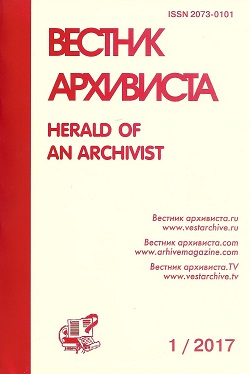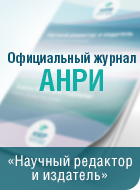“Roof over Their Head” for Soviet Soldier in Europe and Asia: From the Epistolary Heritage of Front-Line Soldiers: 1944–45



Scientific article
УДК 94(47)”1941/1945”+82-6+930.253
DOI 10.28995/2073-0101-2022-2-408-420
Tazhidinova, Irina G.
Kuban State University, Krasnodar, Russian Federation
“Roof over Their Head” for Soviet Soldier in Europe and Asia: From the Epistolary Heritage of Front-Line Soldiers: 1944–45
Abstract
The article reconstructs practices for solving the “housing problem” in the front-line everyday life of Soviet soldiers and officers in 1944–45, when advancing through the territory of a number of European states and participating in the Far Eastern military campaign. The topic is in the mainstream of military anthropological research and has been developing in the Russian historiography for over 25 years. Such studies are based on sources of personal provenance, which are being actively introduced into scientific use, interpreted, and compared with official documents. The article throws light on housing situation of the Red Army soldiers, a poorly studied aspect of their daily life at the final stage of the Second World War. It fills the gaps concerning living conditions of Soviet combatants, dynamics and practices of their housing outside the USSR, and their interactions with local population. The author aims to prove that living situation of Soviet soldiers and officers was important for defeating the enemy. The research methods are content and discourse analysis of epistolary documents, private correspondence of the front-line soldiers with their family and friends (both published and unpublished). The study confirms correlation between everyday life of combatants and combat effectiveness of the army. It clarifies the concept of “front-line life” and its structure. During the hostilities that took place abroad of the USSR in 1944–45, Soviet soldiers and officers visited a number of European countries (Romania, Poland, Czechoslovakia, etc.). They were housed in forests, temporary dwellings (dugouts) and endured great inconveniences. However, billeting for overnight or prolonged housing was also a common practice. Letters of front-line soldiers describe living conditions in cities and villages of several countries, demonstrating interest of the Soviet people in the living conditions abroad. They note comfort of the housing and availability of the amenities, features of the architecture and interior. There is much information on the living conditions in Germany, and we see contradictions in the attitude of Soviet combatants to the German housing and things. Letters about the living conditions in China show that they seemed exotic to the Soviet people.
Keywords
Historical sources, epistolary sources, military anthropology, World War II of 1939–45, front-line everyday life, Soviet soldiers and officers, private correspondence, European countries, China, housing and living conditions.
Download the article: tazhidinova_doi
References
KRINKO, E. F. Velikaya Otechestvennaya voina v istoriko-antropologicheskikh issledovaniyakh [The Great Patriotic War in historical and anthropological research. In Russ.]. IN: Russkaya starina, 2020, no. 11, pp. 4–13.
LOGUNOVA, N. V., MAZITOVA, L. L. “Vzglyad iz okopa”: frontovye pis'ma kak ob"ekt nauchnogo osmysleniya ["Lookout from the trench": Letters from the front as an object of scientific comprehension. In Russ.]. IN: Vestnik Rossiiskogo fonda fundamental'nykh issledovanii. Gumanitarnye i obshchestvennye nauki [Bulletin of the Russian Foundation for Basic Research. Humanities and social sciences], 2020, no. 2, pp. 52–66.
SENYAVSKAYA, E. S. 1941–1945: Frontovoe pokolenie: Istoriko-psihologicheskoe issledovanie [1941–45: Battlefield generation: Historical and psychological research. In Russ.]. Moscow, IRI RAN publ., 1995, 218 p.
SENYAVSKAYA, E. S. Frontovoi byt Velikoi Otechestvennoi voiny: struktura i osobennosti [Front-line life of the Great Patriotic War: Its structure and features. In Russ.]. IN: Vestnik antropologii, 2021, no. 2, pp. 7–25.
SENYAVSKAYA, E. S. Frontovaya povsednevnost' Velikoi Otechestvennoi voiny: opyt konkretno-istoricheskogo issledovaniya [Front-line daily life of the Great Patriotic War: An attempt of concrete-historical research. In Russ.]. IN: Povsednevnyi mir sovetskogo cheloveka 1920–1940-h gg. [Daily life of Soviet man in the 1920s–40s. In Russ.]. Rostov-on-Don, YuNTs RAN publ., 2009, pp. 125–126.
SENYAVSKAYA, E. S., SENYAVSKII, A. S., ZHUKOVA, L. V. Chelovek i frontovaya povsednevnost' v voinakh Rossii XX v.: Ocherki po voennoi antropologii [Man and front-line daily life in the wars of Russia of the 20th century: Essays on military anthropology. In Russ.]. Moscow, IRI RAN, Tsentr gumanitarnykh initsiativ publ., 2017, 422 p.
YUNINA, E. A. Voennaya povsednevnost' 1941–1945 gg. v epistolyarnykh dokumentakh sibirskikh kombatantov [Military everyday life of 1941–45 in the epistolary documents of Siberian combatants. In Russ.]. IN: Genesis: istoricheskie issledovaniya, 2019, no. 11, pp. 65–100.
About the authors
Tazhidinova Irina Gennadyevna, PhD in History, associate professor, Kuban State University, department of sociology, assistant professor, Krasnodar, Russian Federation, +7-962-860-77-77, This e-mail address is being protected from spambots. You need JavaScript enabled to view it
Submitted 5.10.2021, published (for citation):
TAZHIDINOVA, I. G. “Krysha nad golovoi” dlya sovetskogo soldata v Evrope i Azii. Iz epistolyarnogo naslediya frontovikov 1944–1945 gg. [“Roof over Their Head” for Soviet Soldier in Europe and Asia: From the Epistolary Heritage of Front-Line Soldiers: 1944–45. In Russ.]. IN: Vestnik arhivista / Herald of an Archivist, 2022, no. 2, pp. 408-420. doi 10.28995/2073-0101-2022-2-408-420











